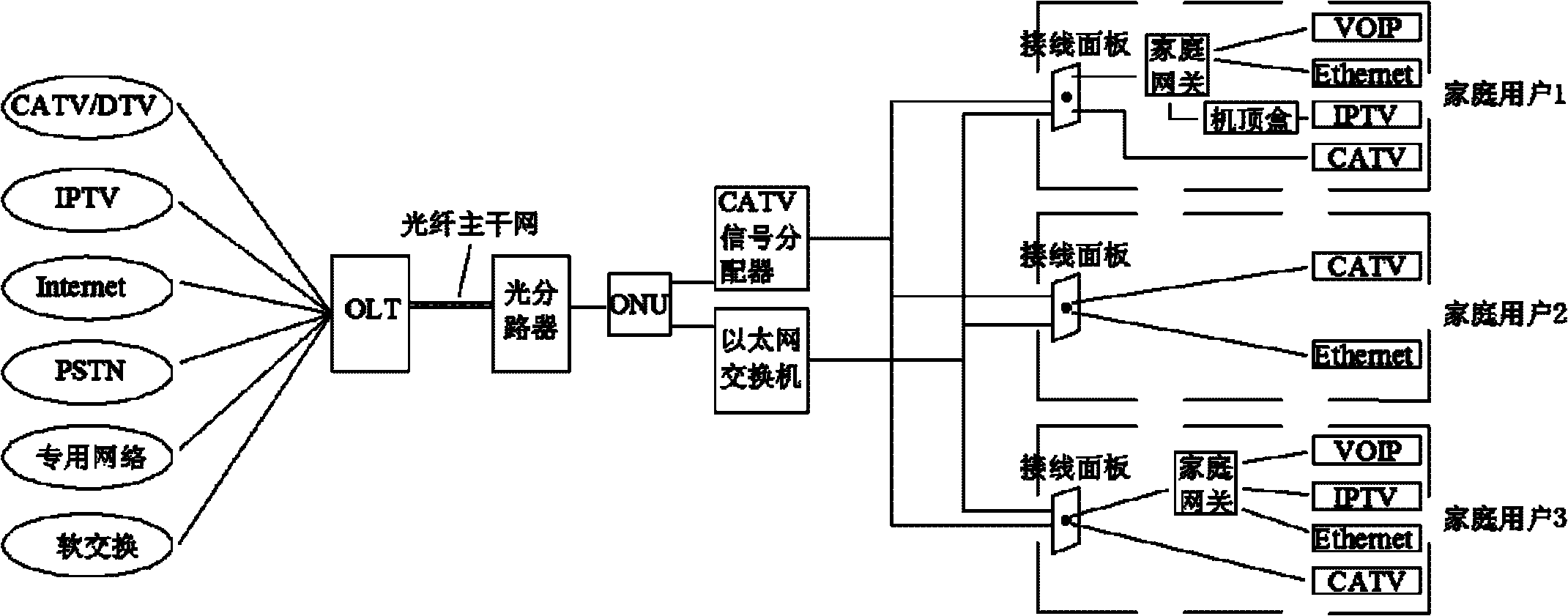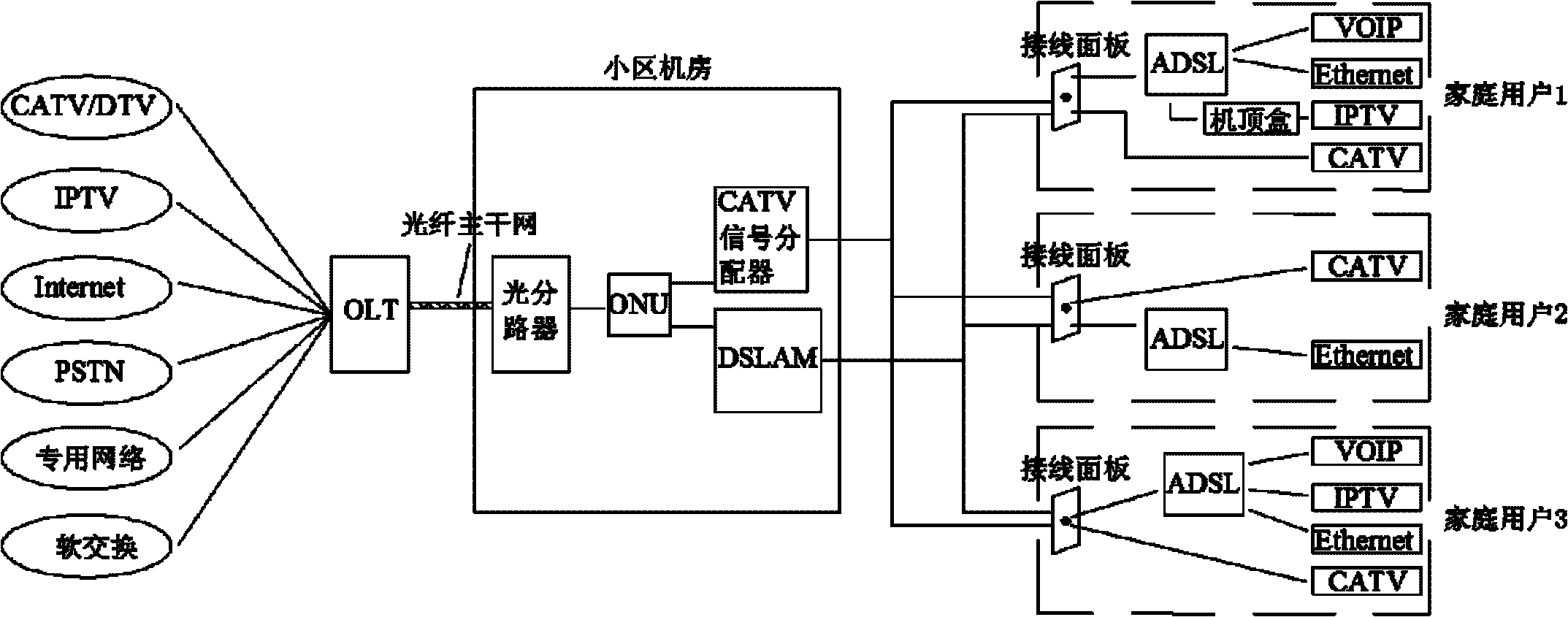Active optical cable
An optical cable and cable technology, applied in the field of active optical cables, can solve the problems of restricting the performance of optical network systems, restricting user service bandwidth, and avoiding the use of copper wires, so as to achieve flexible and convenient access, improve service bandwidth, and avoid copper wires. effect used
- Summary
- Abstract
- Description
- Claims
- Application Information
AI Technical Summary
Problems solved by technology
Method used
Image
Examples
Embodiment 1
[0041] Such as Figure 4 As shown, in the active optical cable of this embodiment, the optical transmission cable in the cable body adopts a dual optical fiber design, one of which is responsible for data reception (optical reception cable), and the other is responsible for data transmission (optical transmission cable) ), the end of the optical transmission cable connected to the optical connector is called the front end, and correspondingly, the other end (the end connected to the photoelectric conversion connector) is called the rear end. The optical connector at the front end is a dual-core optical fiber connector, which is mainly used to connect to the optical interface (the optical interface is located on the wiring panel, optical fiber panel, etc., for example), so as to access the optical network to obtain the optical signal from the OLT. ; The photoelectric conversion connector at the back end is mainly responsible for photoelectric conversion, from Figure 4 As can ...
Embodiment 2
[0047] Such as Figure 5 As shown, the active optical cable of this embodiment is exactly the same as the first embodiment in terms of the cable body, only the adapter is different: the first embodiment uses an adapter with a splitting function, which can distribute the AOC signal It is used for multiple user devices; and the second embodiment adopts the simplest one-to-one solution, that is, one AOC can only correspond to one entrance of the adapter. If users need to use multiple devices at the same time, they need to install routers or switches by themselves. . Or if there are multiple optical interfaces, AOCs can also be inserted into different optical interfaces, and each AOC can be inserted into different inlets of the adapter.
Embodiment 3
[0049] Such as Figure 6 As shown, in the active optical cable of this embodiment, its adapter has various interfaces, such as Figure 6 shows a WLAN interface, an RJ45 interface, an RJ11 interface, and an RF interface. Figure 6 Only one interface is shown for each of the above interfaces as an example. It can be understood that the types of interfaces are not limited to the above types, and the number of each type of interface is not limited to one. Due to the existence of multiple interfaces of the adapter, correspondingly, the signal processing chip needs to have the processing capability of multiple signals, and be able to control multiple signals such as voice, video, and Ethernet at the same time.
PUM
 Login to View More
Login to View More Abstract
Description
Claims
Application Information
 Login to View More
Login to View More - R&D
- Intellectual Property
- Life Sciences
- Materials
- Tech Scout
- Unparalleled Data Quality
- Higher Quality Content
- 60% Fewer Hallucinations
Browse by: Latest US Patents, China's latest patents, Technical Efficacy Thesaurus, Application Domain, Technology Topic, Popular Technical Reports.
© 2025 PatSnap. All rights reserved.Legal|Privacy policy|Modern Slavery Act Transparency Statement|Sitemap|About US| Contact US: help@patsnap.com



